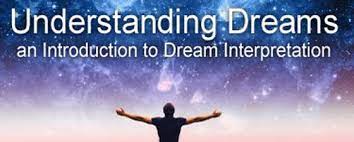
Understanding Dreams: A Comprehensive Guide to Dream Interpretation
Dreams have fascinated humanity for centuries, dreams interpretation often seen as a window into our subconscious minds. The interpretation of dreams can offer valuable insights into our thoughts, emotions, and psychological state. This article explores the principles of dream interpretation, common types of dreams, and methods for understanding what our dreams might be telling us.
The Nature of Dreams
Dreams are a series of thoughts, images, and sensations occurring in the mind during sleep. They often reflect our emotions, experiences, and unresolved issues. According to psychological theories, dreams serve as a way for the brain to process information and emotions. Sigmund Freud, a pioneer in dream analysis, proposed that dreams are a manifestation of our repressed desires and conflicts. Carl Jung, another influential figure, suggested that dreams reveal aspects of our collective unconscious and archetypes.
Common Types of Dreams
- Lucid Dreams: In these dreams, the dreamer is aware that they are dreaming and can sometimes control the dream’s content. Lucid dreaming can be a tool for self-exploration and problem-solving.
- Nightmares: These are distressing dreams that evoke fear, anxiety, or terror. Nightmares can result from stress, trauma, or unresolved issues and may indicate underlying emotional or psychological struggles.
- Recurring Dreams: These dreams repeat over time and often feature similar themes or scenarios. They may highlight unresolved conflicts or persistent concerns in the dreamer’s life.
- Prophetic Dreams: Some people believe these dreams provide glimpses into future events. While scientific evidence supporting prophetic dreams is limited, many cultures attribute significant meaning to these experiences.
- Daydreams: Unlike regular dreams, daydreams occur while a person is awake and involve fantasizing or imagining scenarios. They can provide insight into desires, fears, and aspirations.
Techniques for Dream Interpretation
- Keep a Dream Journal: Recording dreams as soon as you wake up can help capture details and patterns. Noting emotions, symbols, and themes can aid in identifying recurring elements and their meanings.
- Analyze Symbols: Dreams often contain symbolic representations of feelings, desires, or experiences. Understanding common dream symbols (e.g., flying, falling, being chased) and their personal significance can provide insights into the dream’s meaning.
- Reflect on Emotions: The emotions experienced in dreams can offer clues to their interpretation. Consider how the emotions in the dream relate to your waking life and personal experiences.
- Consider Personal Context: The meaning of a dream can vary based on individual experiences and cultural backgrounds. Reflecting on recent events, relationships, and personal issues can help contextualize the dream’s message.
- Seek Professional Guidance: For those struggling with persistent or troubling dreams, consulting a psychologist or a therapist specializing in dream analysis can provide additional support and insights.
Conclusion
Dream interpretation is a deeply personal and subjective practice. While there are common themes and symbols, the meaning of a dream can be unique to each individual. By exploring the nature of dreams and employing various techniques for interpretation, one can gain a better understanding of their subconscious mind and its impact on their waking life. Whether through personal reflection or professional guidance, interpreting dreams can be a valuable tool for self-discovery and emotional well-being.
